Many diners in the West have found themselves at a so-called “hibachi restaurant” watching a chef flip shrimp tails into his hat or create a flaming onion volcano.
It feels theatrical, fun, and distinctively Japanese, yet few realize they are likely eating teppanyaki, not hibachi.
The confusion is widespread. Both cooking styles involve tableside grilling, but their equipment, flavor, and atmosphere differ greatly.
Hibachi represents an older, simpler way of grilling, while teppanyaki showcases a more modern, interactive form of dining. Clarifying these differences can help diners appreciate each style’s character and cultural roots.
Origins and History
Cultural evolution in Japanese cuisine can be seen through hibachi and teppanyaki, two styles that reflect different eras and purposes.
Hibachi represents Japan’s traditional methods of heating and cooking, while teppanyaki emerged as a product of post-war creativity and Western influence.
Though both involve grilling, their development paths and meanings are worlds apart.
Hibachi
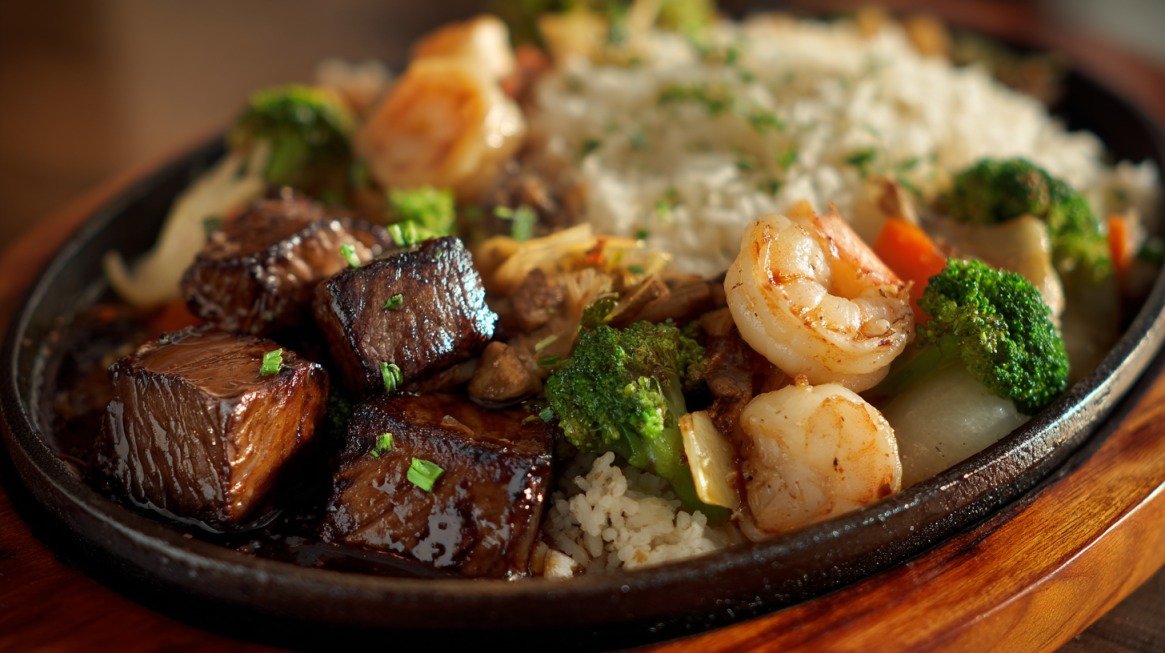
Hibachi originated during Japan’s Heian period (794–1185 AD), a time when cooking tools were both functional and artistic. People used small cylindrical “fire bowls” made of clay or metal to provide warmth and prepare food.
The term hibachi literally means “fire bowl,” describing both its shape and purpose.
Early Japanese households relied on these bowls filled with burning charcoal not only for heating rooms but also for cooking simple dishes such as grilled fish or vegetables.
Over centuries, hibachi evolved from household use to a social cooking tradition. Its portability made it suitable for outdoor events, hunting trips, and picnics, symbolizing togetherness and simplicity.
Traditional hibachi grills offered direct, smoky heat that required skill to control, allowing ingredients to develop rich, natural flavor without excess seasoning.
- Clay or metal fire bowls for heat retention.
- Charcoal is the main heat source, producing natural smokiness.
- Minimal seasoning to preserve the integrity of ingredients.
- Focus on pure, grilled flavor rather than elaborate preparation.
Teppanyaki
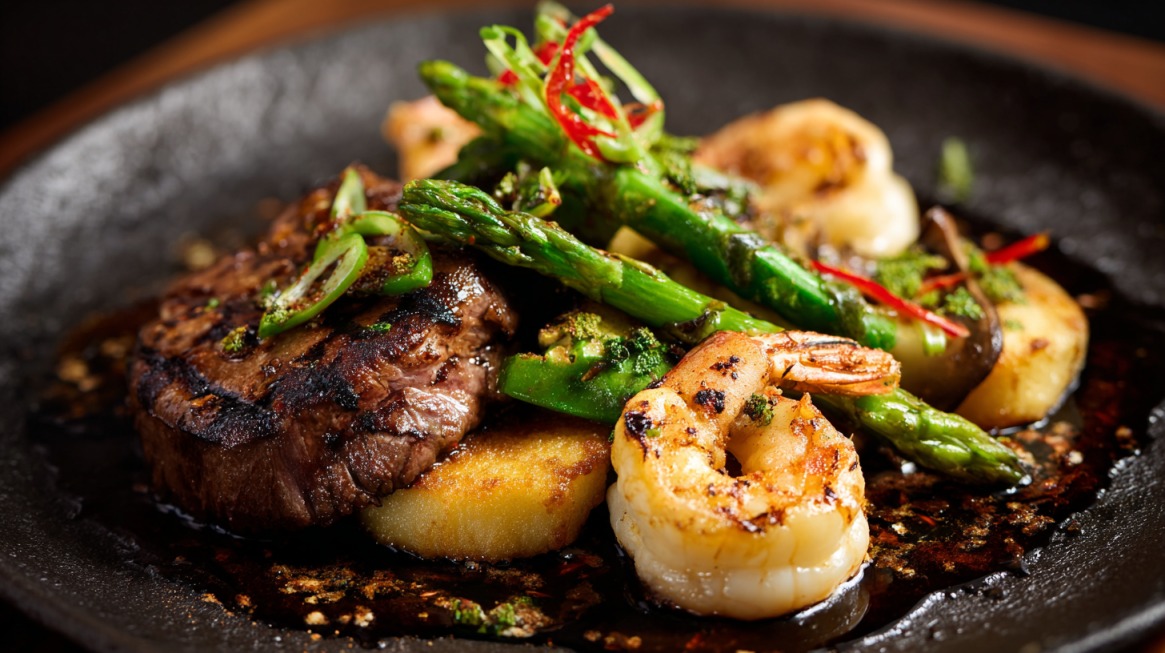
Teppanyaki developed during Japan’s modernization period following World War II. Chefs began to combine traditional Japanese ingredients with Western dining expectations.
In 1945, the Misono restaurant in Kobe introduced the first teppanyaki-style cooking, transforming simple griddles into stages of culinary performance.
The trend gained international recognition when Benihana opened its first restaurant in New York City during the 1960s. Guests were mesmerized by the knife tricks, flaming onion towers, and chefs who turned dinner into a show.
- Use of a flat iron griddle (teppan) for even cooking.
- Integration of Western meats like steak and chicken with Japanese sauces.
- Focus on interaction and performance between chef and diners.
- A social dining environment combining precision and theatrics.
Cooking Equipment & Technique
Grilling methods form the core distinction between hibachi and teppanyaki.
While both rely on heat and surface control, their tools and techniques differ drastically, shaping everything from taste to dining experience.
Grill Type
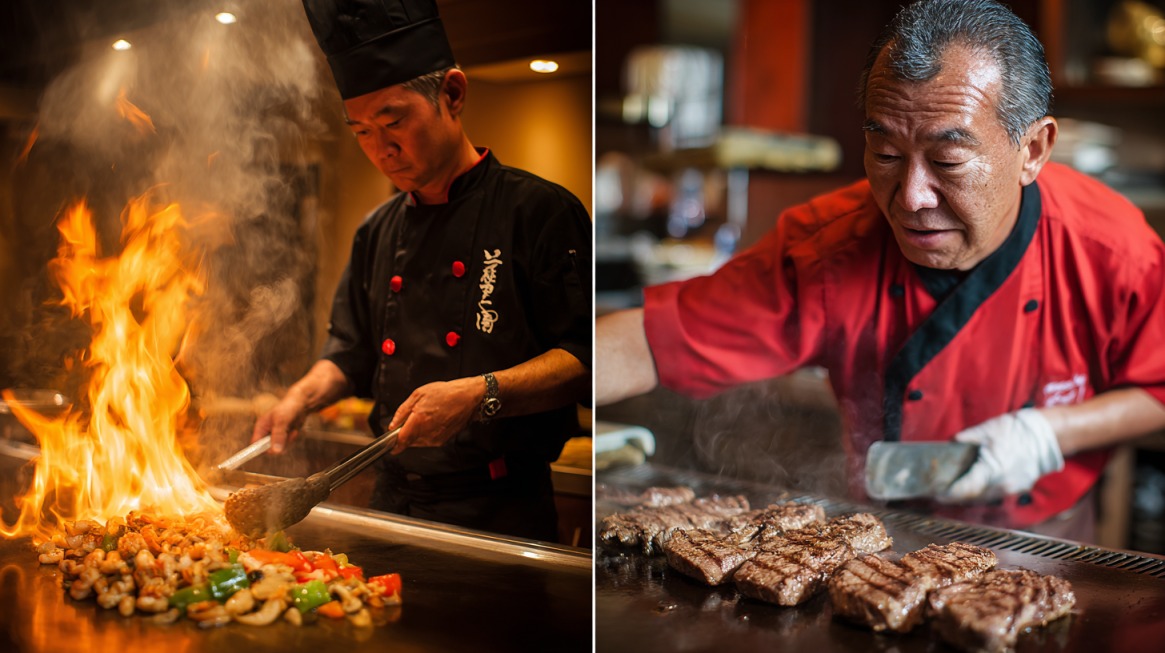
Hibachi relies on an open-grate grill that uses charcoal or wood for fuel. Traditional designs feature a bowl or box shape with slits for air circulation. Heat rises directly through the grate, giving meats and vegetables a smoky, rustic flavor.
Modern hibachi models may use electricity for convenience, but the essence remains tied to natural flame cooking.
- Open-grate design for direct contact with fire.
- Ideal for outdoor use or portable setups.
- Produces a distinct smoky aroma.
- Simple and minimalistic structure.
Teppanyaki uses a large, flat iron griddle called a teppan, heated by propane or gas.
The flat surface allows chefs to move food around freely, mix sauces, and sear ingredients evenly. Chefs often use two metal spatulas to flip, chop, and plate dishes with speed and flair.
- Smooth, solid surface for precise control.
- Propane or gas heating for consistent temperature.
- Large size to cook multiple ingredients simultaneously.
- Allows the addition of sauces and oils without flare-ups.
Heat Source
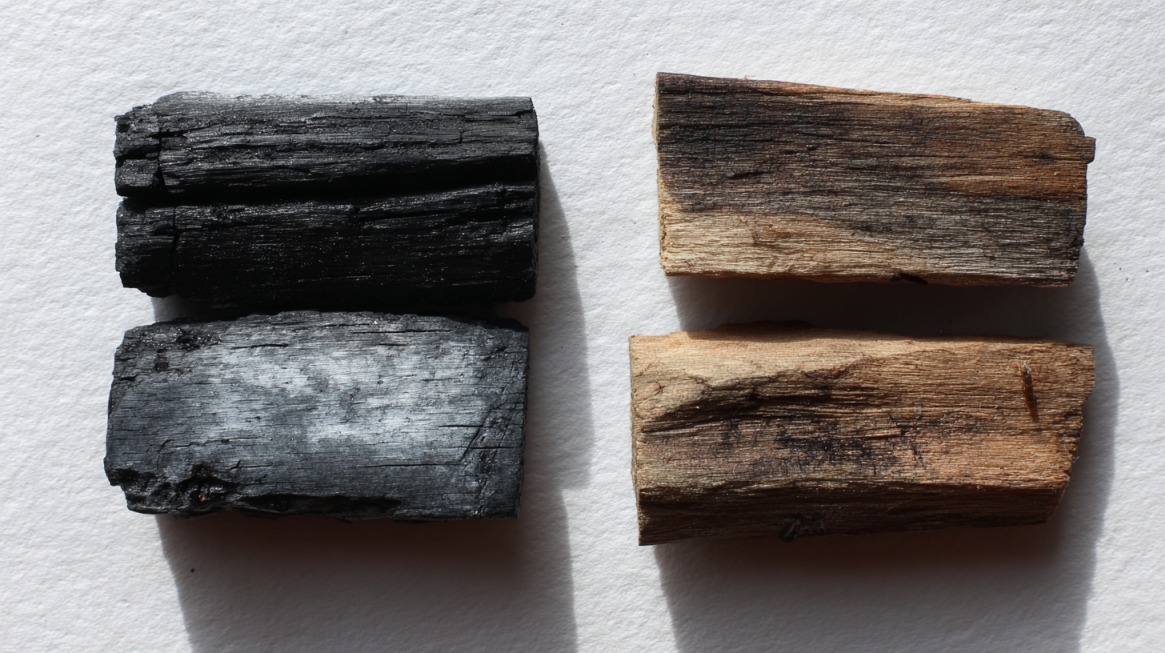
Hibachi depends on natural fuel sources such as charcoal or wood, each providing distinctive aromas and heat levels.
Managing the temperature is an art form, as it directly affects texture and doneness. The chef’s experience plays a major role in maintaining consistent results.
Teppanyaki benefits from modern technology. Propane and electricity provide stable, adjustable heat that ensures precise cooking times.
The even distribution of heat across the griddle prevents burning, allowing chefs to prepare multiple dishes at once while performing entertaining techniques.
Food Preparation and Menu
Menu variety and preparation methods reveal another clear difference between the two. Hibachi maintains a rustic, traditional style, while teppanyaki focuses on precision and presentation.
Ingredients
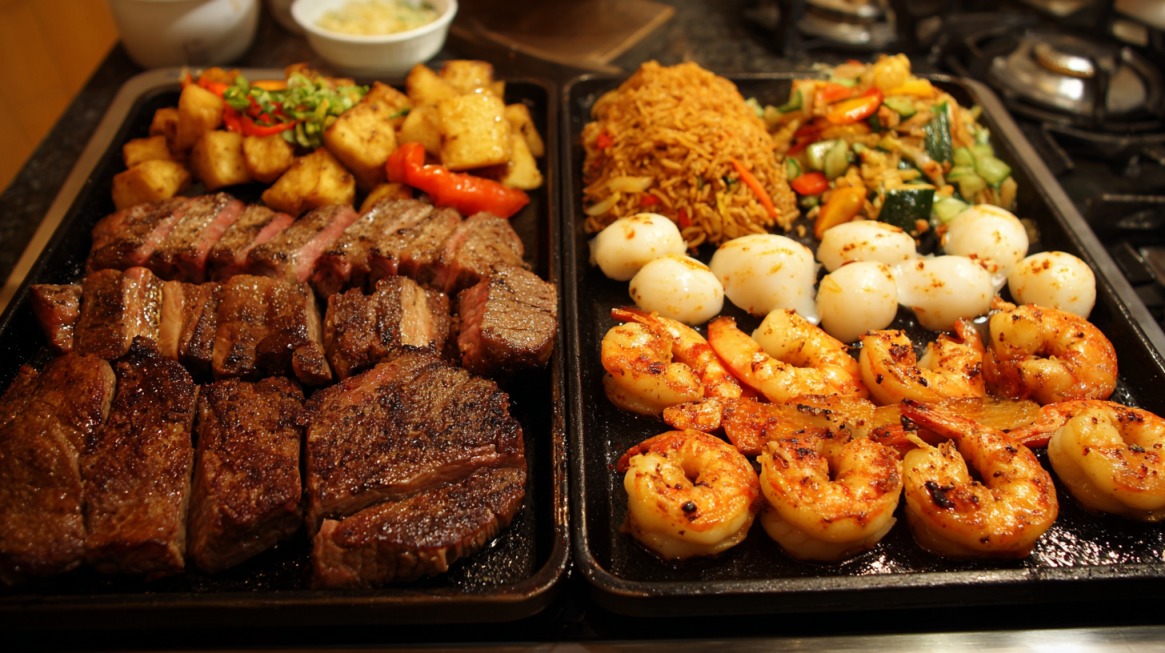
Hibachi meals highlight simplicity. Chefs often grill thicker cuts of steak, chicken thighs, and large vegetables like bell peppers and mushrooms.
The emphasis lies in the smoky, charred finish rather than seasoning. Seafood occasionally makes an appearance but remains secondary to meat and vegetables.
- Steak, chicken, or pork cooked over charcoal.
- Whole or large vegetable pieces.
- Occasional seafood like squid or fish.
- Simple side dishes such as rice or pickles.
Teppanyaki takes a more refined approach. Chefs finely chop ingredients like shrimp, scallops, steak, noodles, and vegetables for quick, even cooking. This allows layering of flavors and sauces in real time, creating a dynamic mix of tastes and textures.
- Shrimp, scallops, and lobster.
- Thinly sliced beef or chicken.
- Fried rice, noodles, and eggs.
- Mixed vegetables such as onions, carrots, and zucchini.
Seasonings & Cooking Medium
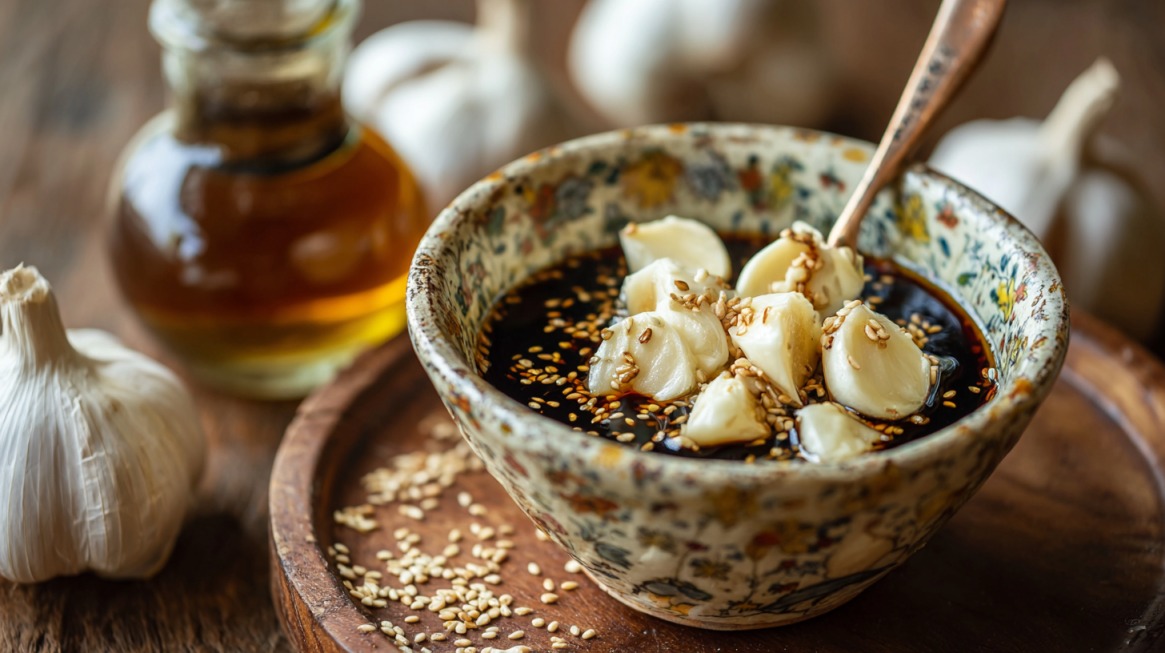
Hibachi cooking relies on minimal flavor additions, letting the fire and smoke dominate. A touch of salt, soy sauce, or teriyaki glaze may be used, but rarely more. The goal is to let the ingredients speak for themselves.
Teppanyaki embraces richness and bold flavor combinations. Garlic butter, sesame oil, and soy sauce are staples, often accompanied by theatrics like flambéing shrimp or tossing fried rice midair. Each movement enhances not just the taste but the overall dining atmosphere.
- Hibachi: Subtle, smoky, earthy.
- Teppanyaki: Savory, buttery, layered.
Which One Should You Choose?
Choosing between hibachi and teppanyaki depends on what kind of dining experience you want. One emphasizes rustic flavor and simplicity, the other energy and entertainment.
| Choose Hibachi if: | Choose Teppanyaki if: |
|---|---|
| You prefer authentic, smoky, charcoal-grilled meals. | You like lively, interactive dining experiences. |
| You appreciate slow cooking with minimal seasoning. | You want chefs to perform tableside tricks while cooking. |
| You want a relaxed and traditional dining atmosphere. | You enjoy a variety of flavors and dishes prepared simultaneously. |
| You enjoy focusing purely on food and flavor rather than presentation. | You prefer a social environment where food and entertainment blend seamlessly. |
Both styles hold their own appeal, offering insight into Japan’s evolution of cooking traditions, one rooted in ancient simplicity, the other in modern showmanship.
Summary
Hibachi and teppanyaki are not interchangeable terms. Hibachi represents Japan’s ancient, fire-bowl tradition centered on simplicity, while teppanyaki showcases modern showmanship and culinary precision.
Next time you dine at a “hibachi” restaurant, observe the grill and the chef’s style—it just might be teppanyaki pretending to be something else.
Read more: A tasty, crispy comfort food idea: Quesabirria. A culinary delight of Japanese cuisine that you will love! Try out this recipe.
Hi there, my name is Kelly Barlow and kellytoeat.com is my blog. Here, I write about various recipes I want to reccommend to readers.
I try to find the best possible recipes that can attract the attention of readers, and at the same time, I strive to write it in the most engaging manner possible.
When I was younger, I wanted to become a chef. Sadly, it wasn’t meant to be, but at the very least, I write about it.
